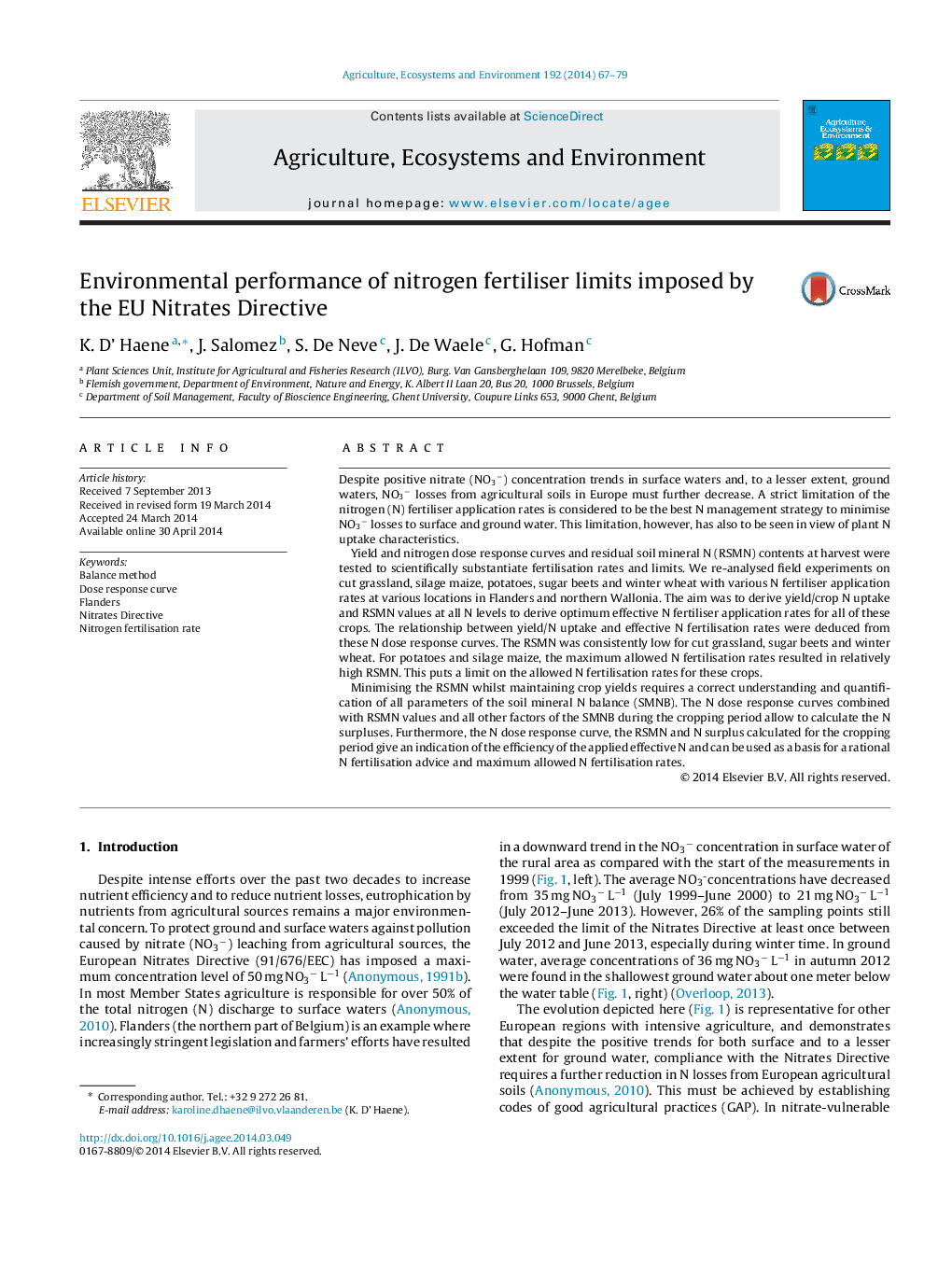| Article ID | Journal | Published Year | Pages | File Type |
|---|---|---|---|---|
| 2413937 | Agriculture, Ecosystems & Environment | 2014 | 13 Pages |
•Residual soil mineral N (RSMN) often increases after a breakpoint at high N rates.•Nitrogen uptake response curves and RSMN to N dose, are a basis for sound N rates.•A formalized rationale for N rates is a good strategy to meet the Nitrates Directive.•Nitrogen application standards and recommendations can be based on mineral N balances.
Despite positive nitrate (NO3−) concentration trends in surface waters and, to a lesser extent, ground waters, NO3− losses from agricultural soils in Europe must further decrease. A strict limitation of the nitrogen (N) fertiliser application rates is considered to be the best N management strategy to minimise NO3− losses to surface and ground water. This limitation, however, has also to be seen in view of plant N uptake characteristics.Yield and nitrogen dose response curves and residual soil mineral N (RSMN) contents at harvest were tested to scientifically substantiate fertilisation rates and limits. We re-analysed field experiments on cut grassland, silage maize, potatoes, sugar beets and winter wheat with various N fertiliser application rates at various locations in Flanders and northern Wallonia. The aim was to derive yield/crop N uptake and RSMN values at all N levels to derive optimum effective N fertiliser application rates for all of these crops. The relationship between yield/N uptake and effective N fertilisation rates were deduced from these N dose response curves. The RSMN was consistently low for cut grassland, sugar beets and winter wheat. For potatoes and silage maize, the maximum allowed N fertilisation rates resulted in relatively high RSMN. This puts a limit on the allowed N fertilisation rates for these crops.Minimising the RSMN whilst maintaining crop yields requires a correct understanding and quantification of all parameters of the soil mineral N balance (SMNB). The N dose response curves combined with RSMN values and all other factors of the SMNB during the cropping period allow to calculate the N surpluses. Furthermore, the N dose response curve, the RSMN and N surplus calculated for the cropping period give an indication of the efficiency of the applied effective N and can be used as a basis for a rational N fertilisation advice and maximum allowed N fertilisation rates.
